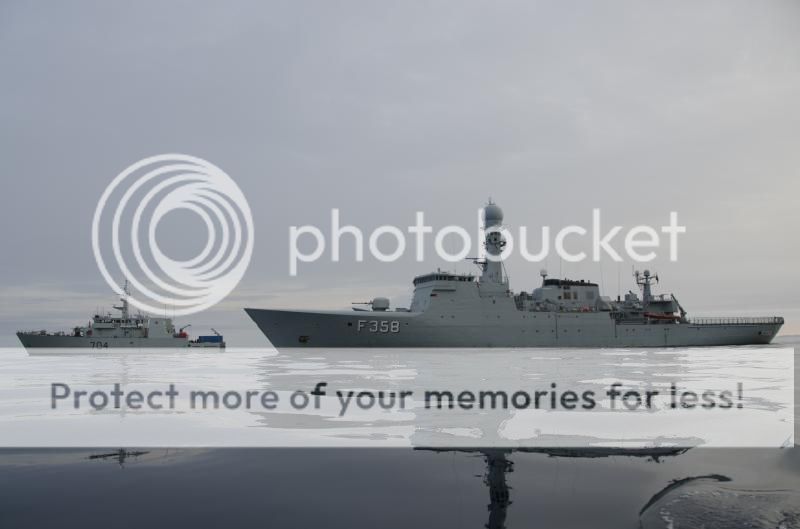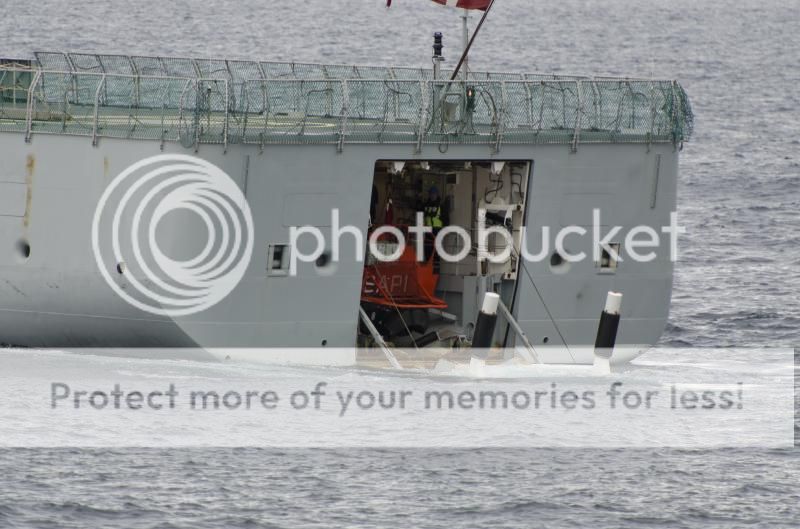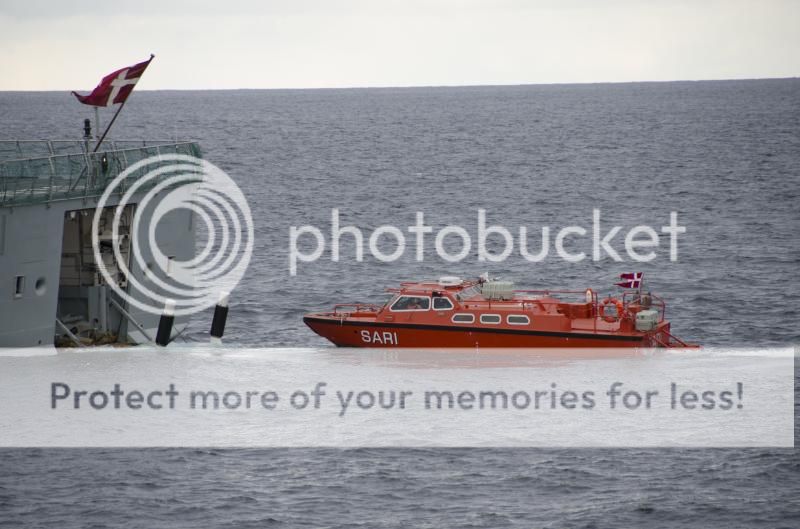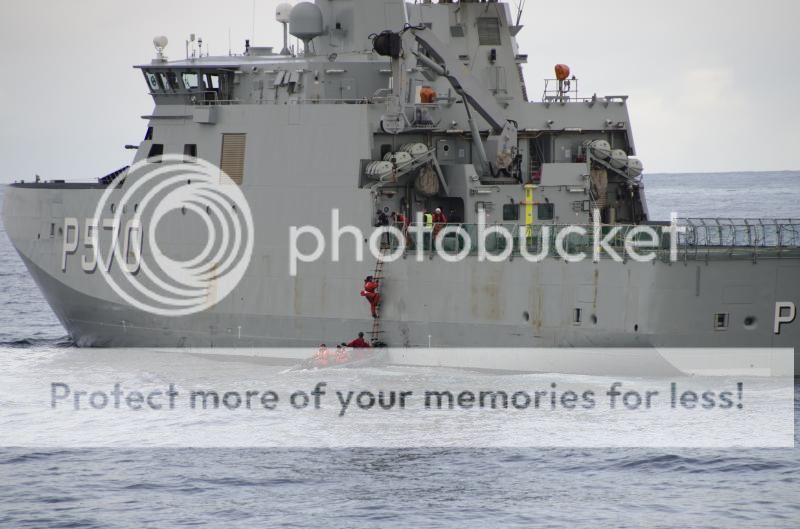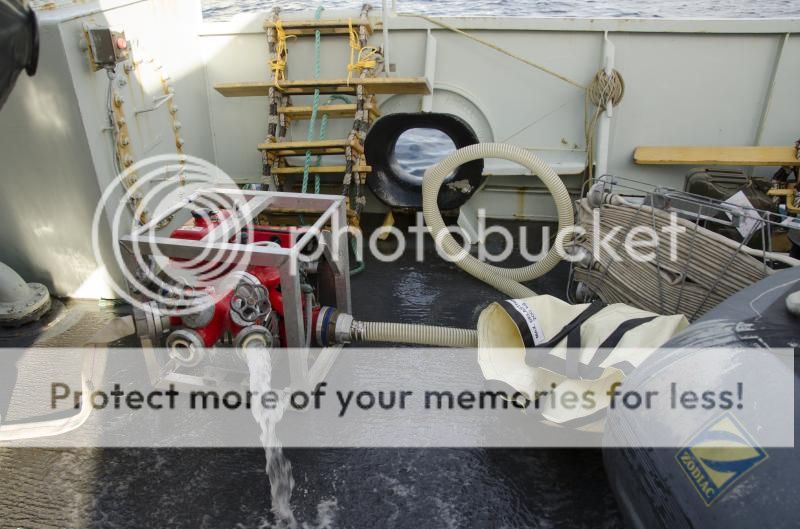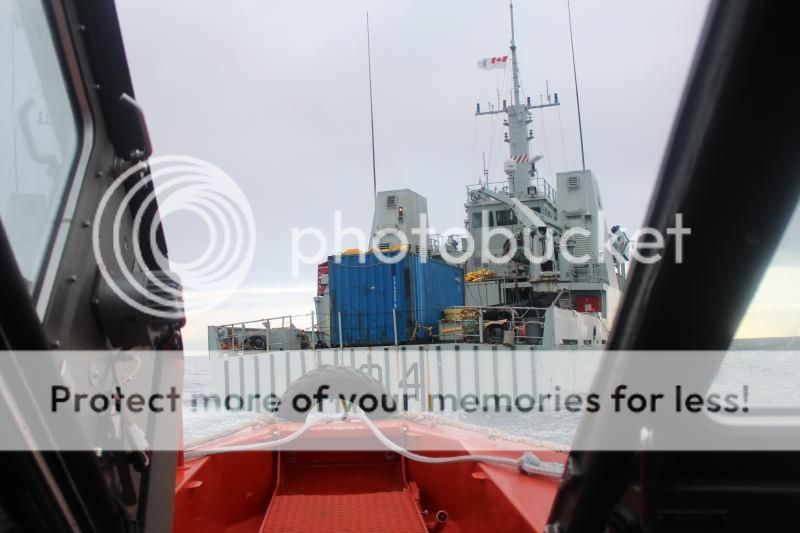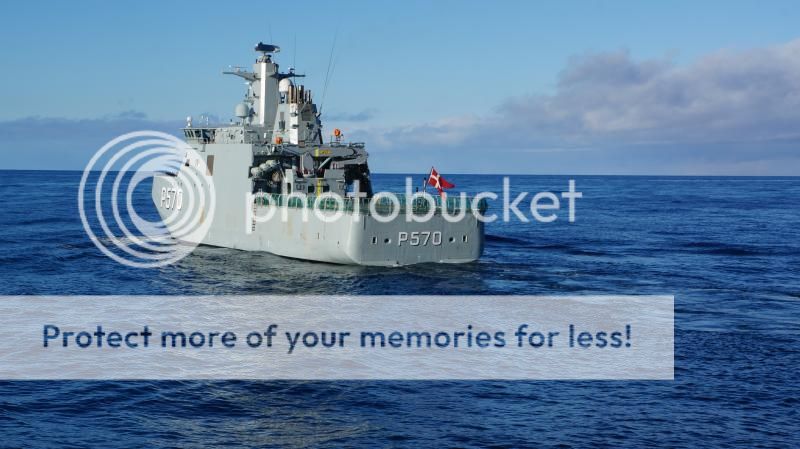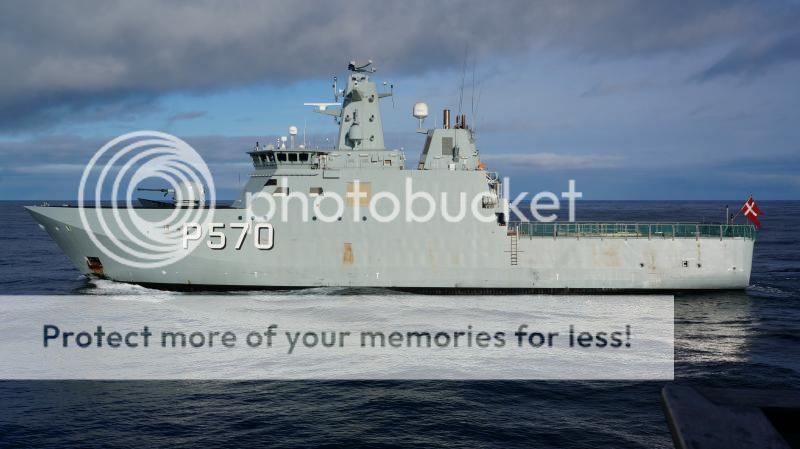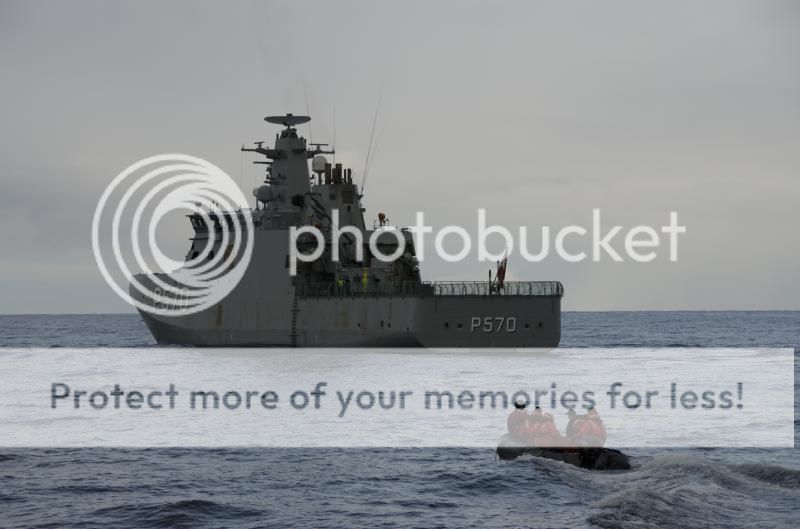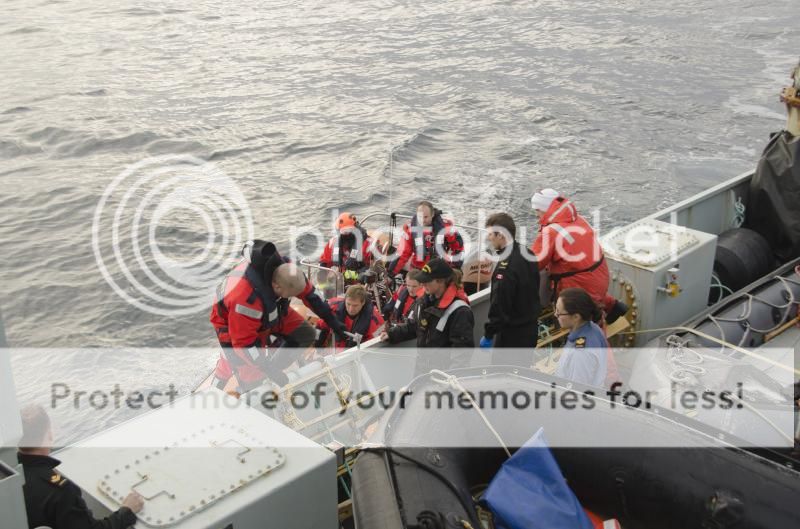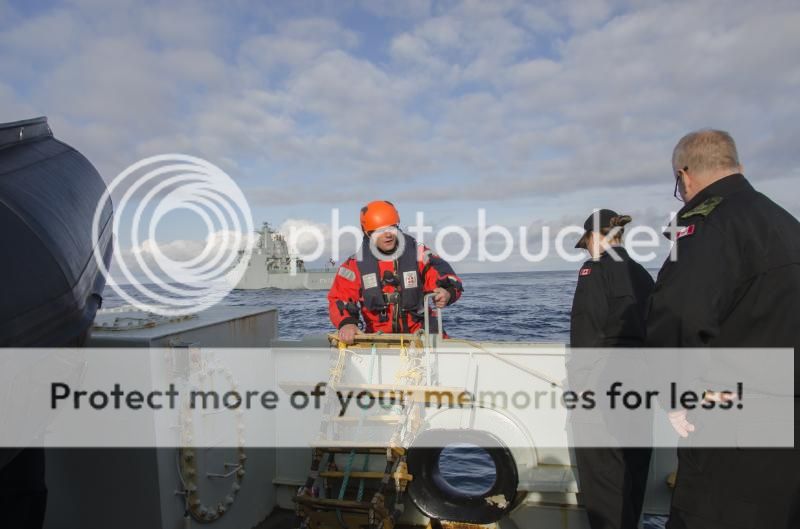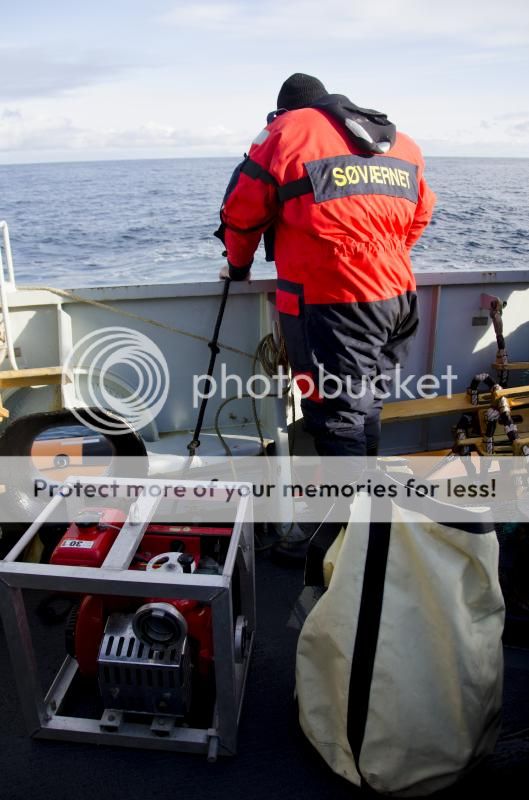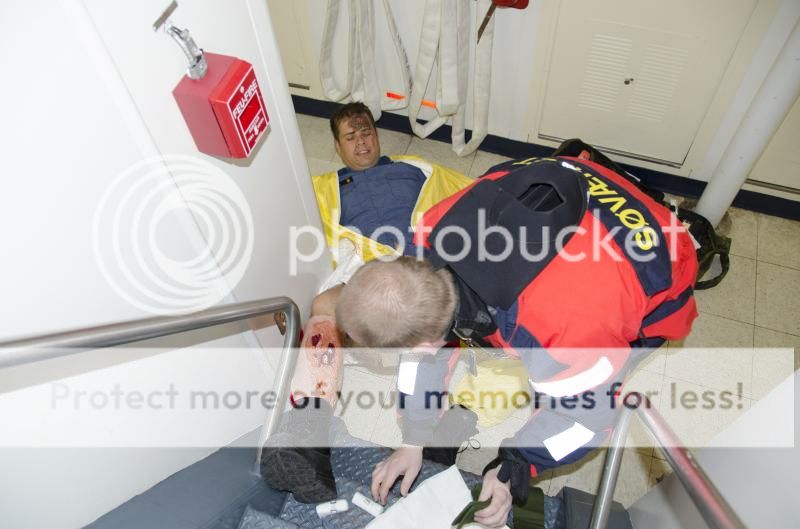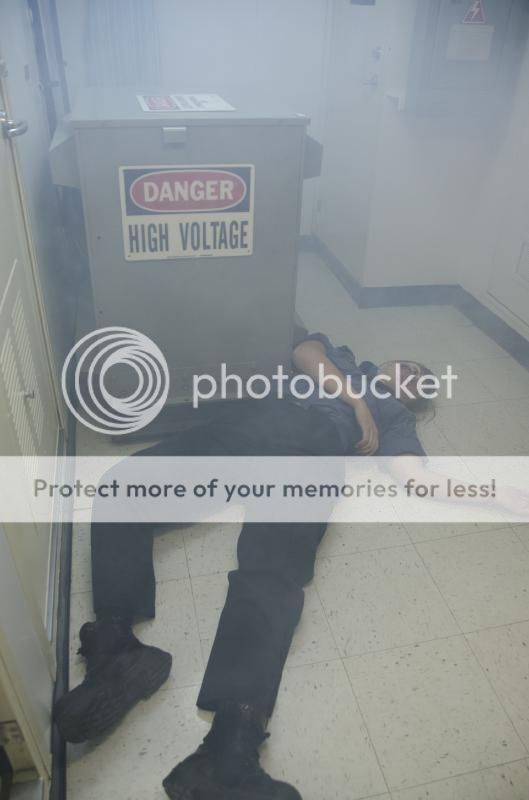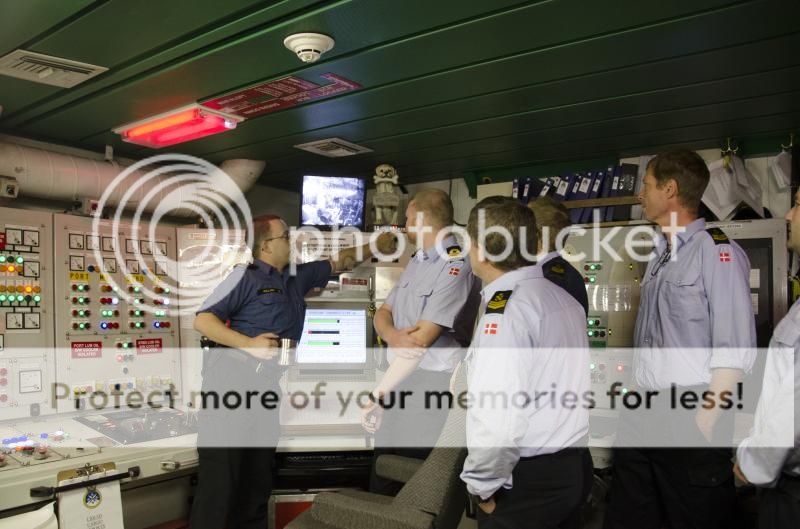Arctic Cooperation – Canadian MCDV, HMCS Shawinigan, exercises with the Danish ice-resistant Patrol Vessel, the Knud Rasmussen
Recent expanisionist activites by Russia on its side of the Arctic emphasized the importance of coordination in the Arctic among Canada, Denmark, and the US. All three nations have a long-term interest in militarily monitoring our side of the strategically essential Arctic waters.
A recent example of both military monitoring and cooperation among neighbours was largely ignored in Canada. The brief exchange between two warships from the Canadian and Danish navies was, in itself, not that unusual – the Danes have taken part in our Operation Nanook exercises for years. But this exercise almost took the form of a cultural exchange out in Baffin Bay. Yet there's no mention of the encounter in the Royal Canadian Navy's news wrap up on summer activities of a pair of Kingston class MCDVs sent up into Canada's Arctic waters.[1]
The Danish military did report on the encounter between their ice-capable patrol vessel, the HMCS Shawinigan with the Knud Rasmussen - MSPC Benny Beenfeldt/ForsvaretKnud Rasmussen, and the Canadian MCDV, HMCS Shawinigan, in mid-Sept 2014. Below is a translation of a Forsvaret article which describes this exchange. We have sung the praises of the Dane's Knud Rasmussen OPV before. But, perhaps, since the MCDVs now seem to be the RCN's most regularly 'visible' asset in Arctic waters, Canadians should be celebrating our Kingston class vessels too.

The Danes have described the Kingston as a minesweeper. That's one of its roles. Survey is another. And this is why the MCDVs have proved so useful in Arctic waters. Their 'Z-drive' azimuthing propellers allow Kingstons to manoeuvre in tight confines or dodge 'growlers' – and visiting Danes commented on the MCDV's extreme manoeuvrability. But the azimuthing drive also allows a Kingston to station-keep accurately above a fixed point on the sea floor. That latter capability should have made these modest little ships of great interest to Ottawa.
Mapping the Arctic sea floor serves as evidence-gathering to bolster Canada's sovereignty claims in the region. And Kingston class MCDVs are the sole Royal Canadian Navy vessel type capable of undertaking such vital work. Despite that, the Kingston class MCDVs have been largely ignored by naval planners and their political masters in Parliament. Why is that?
As usual with Canadian defence planning, the issue is funds. The Navy cancelled the planned Kingston class mid-life refit and, on several ocassions, has proposed retiring the MCDVs or reducing the number of Kingstons. In all these cases, the Navy held the view that 'their' money would be better spent on 'real' warships. This reflects the lack of value placed upon the MCDVs' training role, and on the Naval Reservists which make up their complement. And where is our Parliament in all this? Well, if the Navy doesn't mention it, Ottawa won't have to fund it. And, by and large, the citizens are happy with this.
It behooves the citizenry, and their Parliament, to pay better attention. In this case, not only do these underappreciated Kingston class MCDVs perform a vital service in staking out our national claims, but their NavRes crew members are capable of delivering those services at a lower cost than 'regulars'. At least, that has been the experience of the Danish navy. Perhaps when HMCS Shawinigan and Knud Rasmussen met in the middle of Baffin Bay, their crews had a chance to discuss the relative merits of naval reserves. [2] Is it too much to hope that a similarly informed conversion about valuable assets take place in the Canadian Parliament?
-------------------------
Knud Rasmussen practicing with the Canadian minesweeper [ HMCS Shawinigan ]
Original in Danish by Forvaret: Knud Rasmussen øver sammen med Canadisk minestryger
Sep 16, 2014
In the early morning on northern Baffin Bay, the sun shines and only a light breeze blows. The Canadian minesweeper HMCS Shawinigan, with its 45-man crew, is patrolling near the Canadian/Greenlandic boundary. Nearby, the Inspektionsfartøjet (Inspection Vessel) Knud Rasmussen is also on patrol. Suddenly, the chief of the watch aboard the Knud Rasmussen picks up a distress call on VHF radio. A fire has broken out aboard a Greenlandic research ship. They have three wounded, one crew member missing, and require urgent assistance.
This was the start of a 'cooperation exercise' (SAMEX) [3] between the Knud Rasmussen and the HMCS Shawinigan. The emergency call was simulated only for the purposes of the exercise. The day's program also featured a replenishment-at-sea (RAS) exercise, crew exchanges, casualty exercises aboard both vessels, and, later, a photography session.
The first item on the exercise agenda was the exchange of crew members between the two ships. Six crew members from the Knud Rasmussen sailed over to the Shawinigan and seven Canadians came back. Tours of these two ships were conducted throughout the morning. It was a good opportunity to experience each other's working conditions, work practices, and equipment, as well as a chance to swap a few sailors' stories over coffee. The Danish sailors found the Shawinigan crew friendly and extremely accommodating. The Danish delegation, which made a thorough tour of the Shawinigan with demonstrations of various equipment, were allowed to manage the Canadian ship, experiencing its full manoeuvring capabilities.[4]
Canadian sailors were impressed by the conditions and equipment aboard the Danish ship. The Canadians also found it hard to hide their excitement and jealousy when they saw the Knud Rasmussen's heated hangars for RHIBs and SAR boat. [5] Crews shared experiences and exchanged stories. It was clear, Danish and Canadian ways of thinking mesh very well.
At mid-day, the Shawinigan and Knud Rasmussen performed a replenishment-at-sea (RAS) exercise involving four close-in ship-to-ship transfers. Shawinigan simulated a very realistic accident scene for the Knud Rasmussen's emergency response teams. In this scenario, a fire raged in the Shawinigan crew cabins. Two crew members were injured and one was missing. Knud Rasmussen intervention teams consisted of firefighters and medics. In collaboration with the Shawinigan's own firefighting personnel, 'smokedivers' from the Knud Rasmussen quickly got the onboard fire under control, while Danish medics took care of the wounded. Firefighters searched the Shawinigan for the missing man, finding him in a smoke-filled area.
This was a well-planned exercise as teams from both the Shawinigan and Knud Rasmussen got a lot out of. A second emergency simulation on the Knud Rasmussen also involved an onboard fire. As with the first scenario, this exercise also involved several wounded and a search for a missing crew member. Intervention teams from the Shawinigan's successfully tackled this task and, subsequently, provided very interested feedback on the actions to the Knud Rasmussen's technology officer [Teknik Officer or TKO, generally a kaptajnløjtnant ].
The day ended with the Shawinigan's emergency teams being returned to their ship in the Knud Rasmussen's SAR boat. Photographs were taken of the two vessels, and mutual thanks said for the day's exercises over the radio. For both ships' crews, it had been a long, exciting, challenging, and educational day.
-------------------------
[1] For an earlier example of Danish-Canadian cooperation, see Northern Deployment 2009. The RCN reported on the MCDVs, HMCS Kingston and Shawinigan, both home-ported in Halifax. See Plenty of firsts in the Arctic for our Maritime Forces this summer, 30 Sept 2014.
[2] The Danish Naval Home Guard (Marinehjemmeværnet, MHV) primarily patrol their home waters and undertake maritime search-and-rescue missions. The MHV is part of the Danish Home Guard (Hjemmeværnet, HJV). All 48,000 Danish HJV reservists are unpaid volunteers.
[3] In Danish usage, SAMEX refers to a Samarbejdsøvelsen or cooperation exercise rather than to the naval Surface-to-Air Missile exercise associated with SAMEX in English usage.
[4] As a Kingston class MCDV, HMCS Shawinigan manoeuvres by rotating its twin Z-drive azimuthing thrusters. Z-drives also give the MCDV superior station-keeping characteristics.
[5] The Knud Rasmussen class each carry one high-speed, ice-resistance SAR boat. The 10.8 metre-long Storebro SB90E SAR boats can hit upward of 42 knots. The SAR boats in service are SAR1 Dagmar and SAR2 Naja. Four earlier Danish LCP class SB90s lack ice-resistance.
